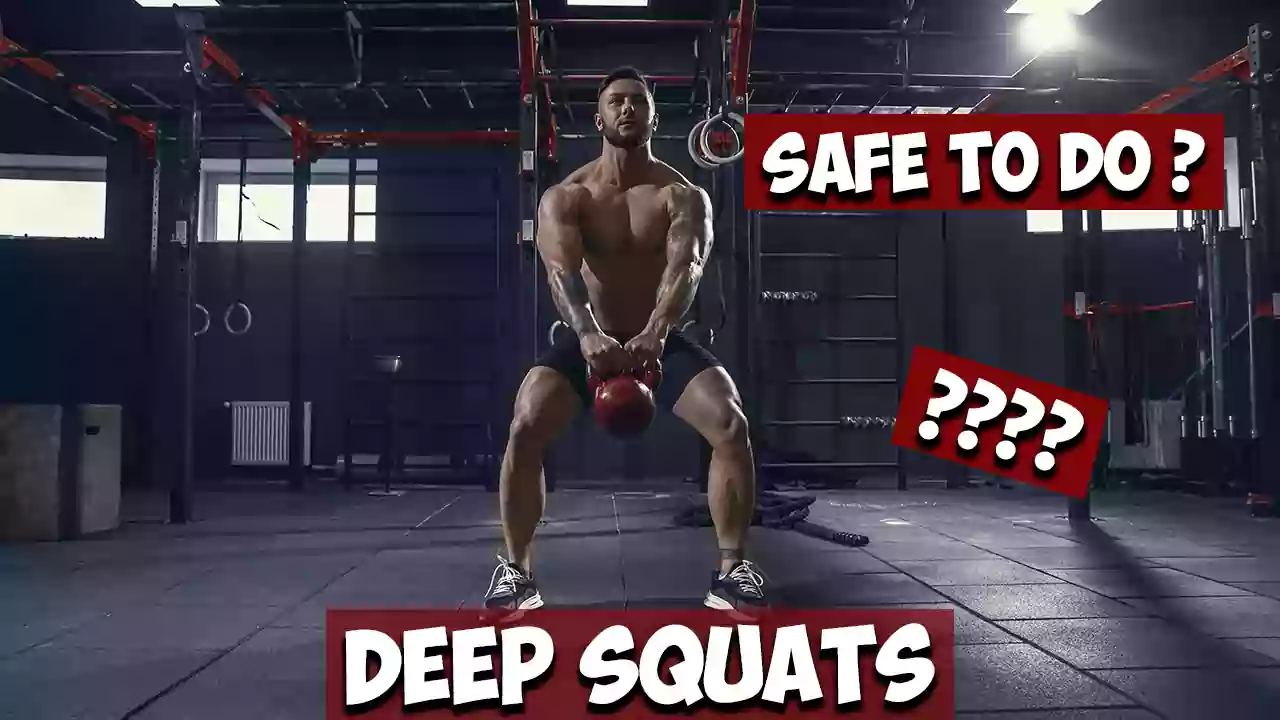So, imagine you are pushing yourself to your squat limit and suddenly a voice comes, “ Hey, don’t move your body so low you’ll get a knee injury”. But at the same time, you see several other gym mates doing the same thing. You’ll definitely get confused. You’ll start asking if deep squatting is good or bad? Does it really cause any injury or is it a myth? If not, then what is the right position to do a deep squat? Don’t worry. We’ve got you.

We’ll tell you how to do deep squats effectively and safely. Let’s dive in.
What is Deep Squatting?
So, first things first. Normal squats are in which you bend your knees enough till your thighs become parallel to the ground, keeping your body at a 90-degree angle. Going past 90 degrees to 100 or maybe 120 degrees in a similar body position, just lowering your hips more than a normal squat position will make it a deep squat.
Deep squats offer greater knee flexibility, while shaping your body. This exercise requires you to lower your body to its maximum limits, that’s why some studies suggest that it might cause knee and back injury due to its high bending position.
Are deep squats safe to perform?
“I feel pain in my knees during a deep squat, it means deep squat is gonna tear my knee muscles.” Many of such comments can be heard from people around you. But, to break their myth, knee pain could have many reasons including weak glutes, unstable ankle position, weak calves, history of knee injuries and poor posture. But believe me and the sciences, none of them is DEEP SQUATS itself. Research has also not found any connection between deep squats and knee injury. Instead, it proposes that due to muscular strength gained by deep squats, your knees and muscles face a low risk of injury. So, we’ll say deep squats are completely safe to perform. The only thing here is to keep your posture right.
So, how to perform deep squats in the right form?
The major technique behind deep squat remains the same except for the difference in the bending angle. Warm up your body before performing a squat, stretch your muscles or maybe have a small run in your street. Now, follow these steps:
- Stand on the leveled ground with your both feet positioned shoulder-width apart; straight back and knees pointing forward.
- Settle yourself in the above position and start bringing your knees down to a 120-degree angle, but go slowly. Do not jump right into 120 degrees, but gradually bring your body down to your desired form.
- When you feel the tension in your glutes and thigh muscles, take a pause and then return to the starting position.
To maximize the benefits of the deep squats, you can upgrade yourself later on to weighted deep squats. In that, you’ll move downward while holding certain weighted barbells or dumbbells and will move back to your initial position. But the core point remains the same, maintaining your position is a must.
Benefits of deep squatting
There are numerous benefits of deep squatting that can’t be achieved solely by simple squatting. Deep squats work on your quadriceps, hip flexors, calves, hamstrings, gluteus maximus, and rectus abdominis muscles- almost your whole body. The amazing benefits it possesses are:
- Core muscle strengthening
- Greater body workout
- Lower back and pelvic stability
- Improved mobility and flexibility
- Burn more calories
- Strong lower body muscles
- Can be performed anywhere, economical
- Minimize the risk of injury
Safety tips
Along with keeping your body in a proper posture, you need to look out for the following tops as well:
- Keep your spine straight, no matter what. Bending your spine during a squat can lead to a painful spine injury.
- Eat healthily or take nutritional supplements to maximize the strength and mass of your gluteal muscles. Otherwise, you might experience pain or misalignment of the knees during the squat position.
- To avoid sore muscles and to maximize the results, keep adding variations to your deep squat routine.
- Look out for the butt wink during deep squats.
Conclusion
Deep squats will not cause you any sort of injury if you manage to keep your posture straight and work out in the proper form. Missing out on deep squats just because of these myths about knee or other injuries is not a good idea. You’ll miss a great workout that is beneficial for your body’s motion, strength, and flexibility. So, without any worries, keep going down.

I look up to fitness as a lifestyle and love to pen down about it. I have 2 years of experience in content writing and I am here to share my research and knowledge on health and fitness.













